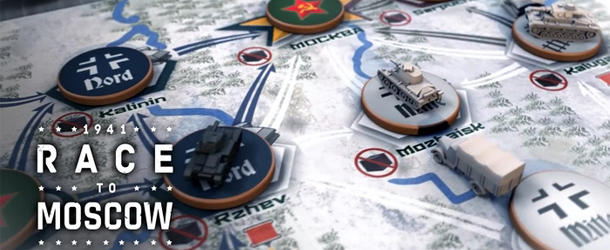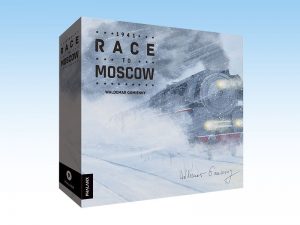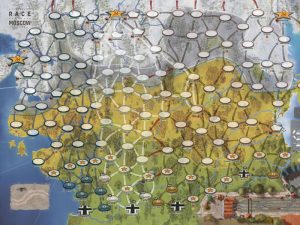“Logistics is the ball and chain of armored warfare”, said Heinz Guderian, German WWII general and tank commander. 1941: Race to Moscow is a game of logistical resourcefulness as well as relentless competitiveness, designed by Waldemar Gumienny, published by PHALANX. The English edition is distributed by Ares Games in US and other countries outside Europe, and will hit the stores starting from June 1st. Players assume the roles of quartermasters bound to enable their armies to advance eastward and reach their destination points before armies of their opponents do.
1941: Race to Moscow is a prequel to 1944: Race to the Rhine board game, based on the historical events of the ‘44 Western Front campaign. Published in 2014 by PHALANX Games, the game was nominated for Golden Geek Awards in the Best War-game category that year and got the third place in the Wargame category of Tric Trac d’Or 2015.
Focused on the ‘41 Eastern Front campaign, with the world's strongest army to beat and a difficult logistical puzzle to solve, 1941: Race to Moscow brings the system to a completely new level. With much deeper and more demanding gameplay, as the Eastern Front logistics was a nightmare of horse wagon, truck, and train composed supply lines. What is more, the powerful enemy armies are just across the border, getting ready to launch a counter attack.
“Operation Barbarossa”, code-name for the German invasion of the Soviet Union, began the largest and most costly campaign in military history, in June 1941, and its failure was a key turning point of the Second World War. Logistics were the key to its failure or success, and this take on the subject has been quite recently made accessible to the wider public in the book “Operation Barbarossa and Germany's Defeat in the East”, by David Stahel. This was the inspiration to PHALANX when looking for a successor of 1944: Race to the Rhine.
In 1941: Race to Moscow, the whole Operation Barbarossa is playable in 90 minutes, with an entirely unique game perspective and experience drawing from 1944: Race to the Rhine, but much deeper. Players take the role of quartermasters of three massive Army Groups, formed together from close to 200 divisions, all aimed at the centers of the Soviet Union - Moscow, Leningrad, and Rostov. The campaign itself was planned to be swift and daring, with a goal to reach the objectives before winter. But after the final push - Operation Typhoon - the invading troops reached the vicinity of Moscow and looked through binoculars at the Kremlin spires on one frosty December morning. And then, the Soviet counteroffensive began.
The players’ job is to keep the logistics chain working, to make sure the speed of the Blitz-krieg is kept at the highest level and the goals are reached in time. That means they must supply fuel to the tanks, ammo to the guns, food to the troops, and fodder to the horses - yes, most of the German divisions used horse-drawn wagons.
Experience difficult tactical decisions and take part in the most challenging race of logistics. Do not linger any more: equip your troops wisely, pave ways for the most efficient supply chains, and prevent your armies from running on empty. Have a blitz on Moscow and have a blast playing the hottest game of logistics ever.
This preview article was originally published by Game Trade Magazine, issue 253 (March 2021).












